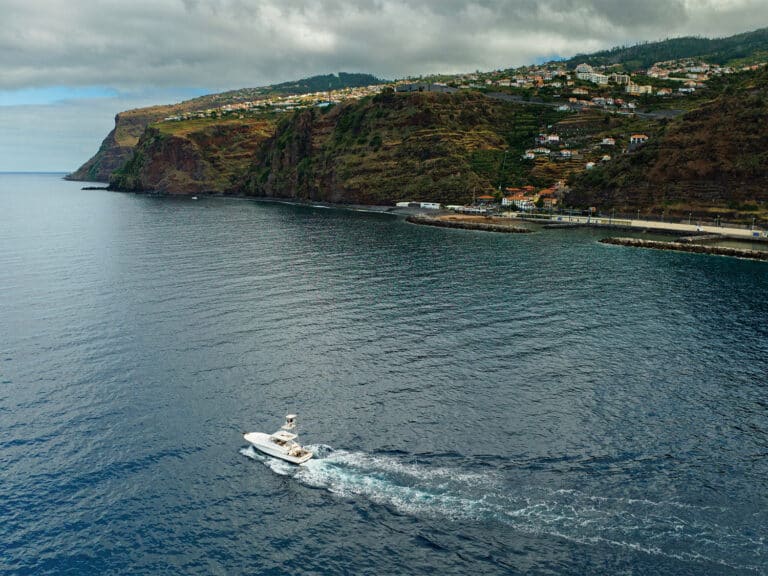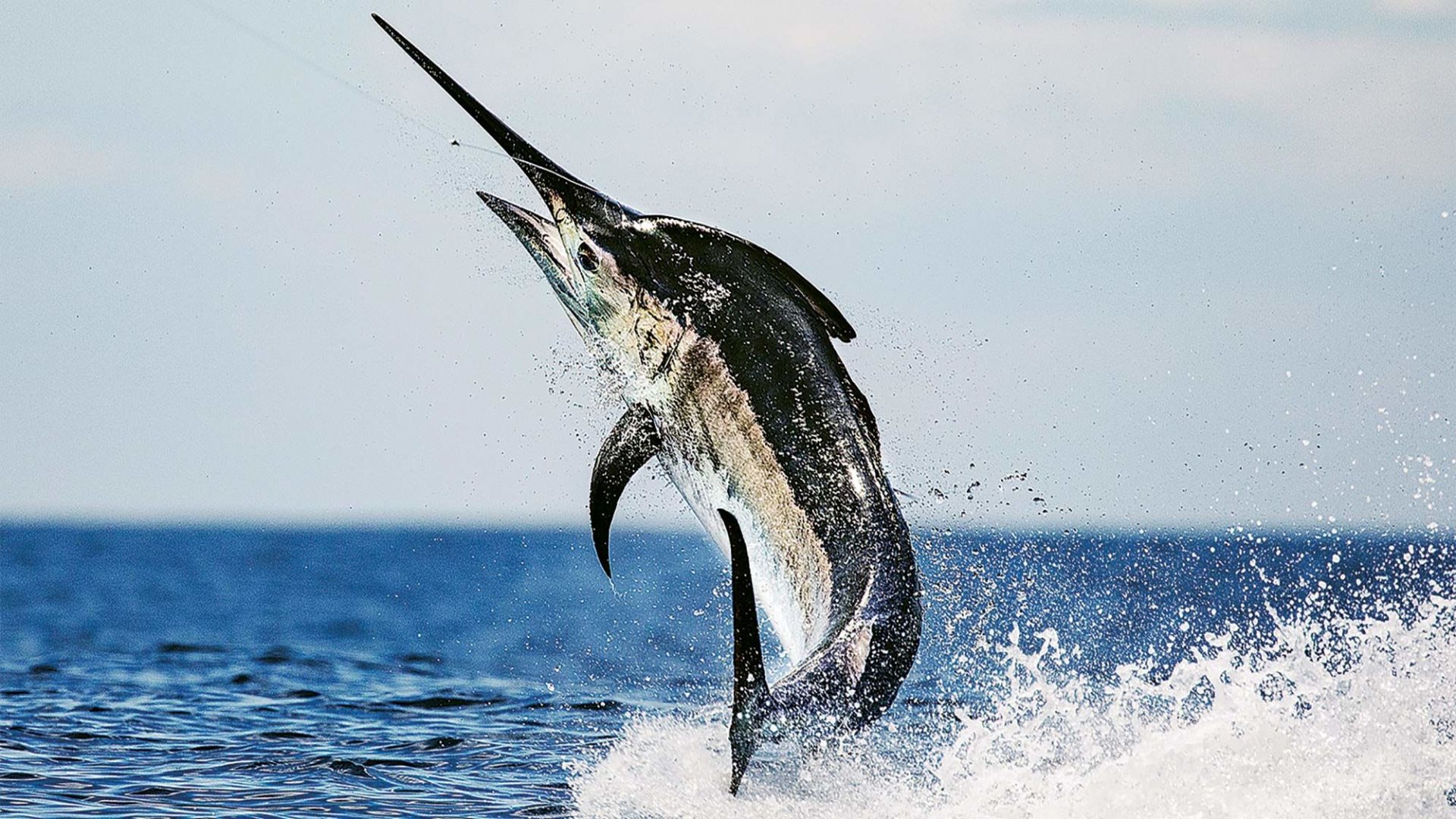
Looking for information on black marlin? We show you quick facts, fishing tips and where to catch marlin. Learn more about these top predators.

Black marlin are one of the largest bony fish in the world, and are one of the top predators of the seas. The International Game Fish Association lists the world record for the species at 1,560 pounds, caught in 1953 by Alfred Glassell, Jr. while fishing off Cabo Blanco, Peru. Other blacks, perhaps even larger than Glassell’s fish, have been reported by commercial fishermen. These fish are renowned for their sporting abilities, putting on rampaging battles and testing even the stoutest of tackle.
Black marlin are unique in several ways:
Black marlin can be caught using a wide variety of fishing techniques, depending on the location.
Black marlin are often found in shallower water than their cousins, the blue marlin. Often, they will be encountered on the edges of deepwater reefs in places like Panama, Costa Rica and Australia. In places where black marlin are concentrated, live-baiting is an effective tactic. Small tunas, bonito and other forage fish are captured live using small spoons or jigs, then bridled to a larger hook and deployed for black marlin. Boats slow-troll these live baits along drop-offs and reef edges in hopes of enticing a bite.
Australia’s Great Barrier Reef is another hot spot for black marlin, particularly the larger specimens over 1,000 pounds, known as granders. Here, the tactic is to fish with large rigged dead baits like mackerel, queenfish and scad, where large hooks are stitched or sewn to the bait. These can be trolled much faster in order to cover more ground.
Black marlin can also be targeted using standard trolling lures such as those from Mold Craft, Black Bart, Moyes, Koya, Coggins, Fathom and others. The most popular fishing spreads consist primarily of larger, more active lures fished closer to the boat, and smaller, straight-running lures farther back from the outriggers. Many pros will select different colors and styles depending on the weather conditions and type of baitfish in the area. Lures are usually rigged with a single large hook, either stiff or free-swinging.
Benefits of fishing with artificial lures include the ability to troll at a higher speed in order to cover more ground and encounter feeding marlin. However, the hook-up to release ratio with lures is lower than with other techniques, since the fish has the ability to throw the lure while jumping.
Black marlin are found in many of the world’s popular fishing destinations. Panama’s famed Tropic Star Lodge has long been a favorite hot spot due to the prolific nature of the black marlin fishery there, as well as the high quality of angling adventure offered by the five-star lodge. Several other top locations in Panama also have reliably good black marlin fishing.
As previously mentioned, Australia’s Great Barrier Reef is another perennial hot spot, and has been since the fishery there was first discovered in the 1950s. Anglers see the GBR as a proving ground for tackle and techniques, honing to a fine edge their ability to target and catch the world’s largest black marlin. In 2018, the southern GBR produced a near-record black. More often, the fishing efforts are centered around the northern part of the reef off Cairns and Lizard Island. The area has produced the majority of IGFA world records for the species, including this notable catch: a massive 1,124-pound black marlin caught by Edward Seay in 1969 to set the men’s 50-pound-test line-class world record.
Black marlin are also occasionally encountered in other destinations including Costa Rica and in fact throughout Central America, Mexico and elsewhere in the Pacific Ocean. By targeting fish using live bait along the areas where shallow reefs drop off into deeper water, it’s possible to entice a black marlin into biting.
More Black Marlin Fishing
Many products featured on this site were editorially chosen. Marlin may receive financial compensation for products purchased through this site.
Copyright © 2024 Marlin. A Bonnier LLC Company. All rights reserved. Reproduction in whole or in part without permission is prohibited.
Sign up for free Marlin Group emails to receive expert big-game content along with key tournament updates and to get advanced notice of new expeditions as they’re introduced.
Subscribe now to get seven keepsake print editions of Marlin per year, along with instant access to a digital archive of past issues, all for only $29 per year.